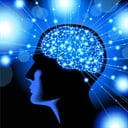What are phosphenes?
A phosphene is a phenomenon characterized by the experience of seeing light without light actually entering the eye. The word phosphene comes from the Greek words phos (light) and phainein. Phosphenes that are induced by movement or sound may be associated with optic neuritis.
Phosphenes can be directly induced by mechanical, electrical, or magnetic stimulation of the retina or visual cortex as well as by random firing of cells in the visual system.
The most common phosphenes are pressure phosphenes, caused by rubbing or applying pressure on or near the closed eyes. They have been known since antiquity, and described by the Greeks. The pressure mechanically stimulates the cells of the retina. Experiences include a darkening of the visual field that moves against the rubbing, a diffuse colored patch that also moves against the rubbing, a scintillating and ever-changing and deforming light grid with occasional dark spots (like a crumpling fly-spotted flyscreen), and a sparse field of intense blue points of light. Pressure phosphenes can persist briefly after the rubbing stops and the eyes are opened, allowing the phosphenes to be seen on the visual scene. Hermann von Helmholtz and others have published drawings of their pressure phosphenes. One example of a pressure phosphene is demonstrated by gently pressing the side of one's eye and observing a colored ring of light on the opposite side, as detailed by Isaac Newton.
More Info:
en.wikipedia.org





